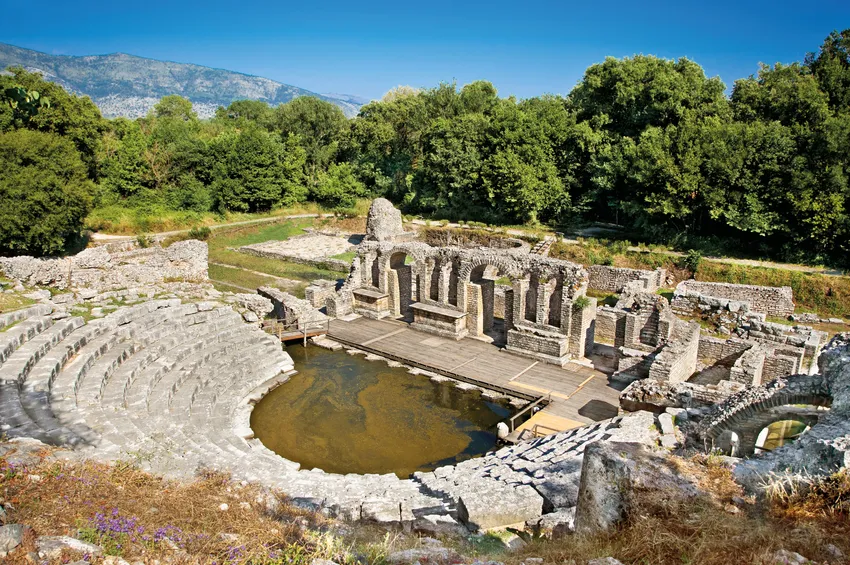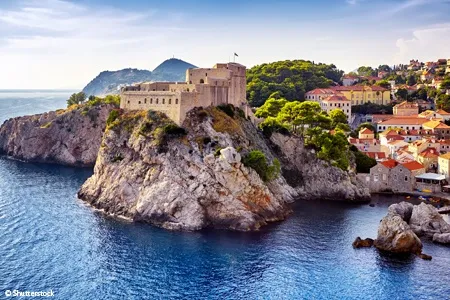

For this excursion, we’ll leave Saranda and head inland, crossing the Bistricë River and the vast Vrina Plain before arriving at the salt lagoon known as Lake Butrint. We’ll visit the UNESCO World Heritage site of Butrint, once part of the Greek and Roman colonies. Inhabited since prehistoric times, the city experienced a great period of prosperity under Byzantine rule. The most ancient objects found at the archaeological site are a stone hammer and a shaft belonging to the latter part the second millennium BCE. There are also many extraordinary Greek objects, including statues of their gods. The first modern archaeological excavations began in 1928 when Benito Mussolini sent an expedition to extend Italian dominance into the area. The excavations, which continued through 1943, uncovered the Hellenistic and Roman part of the ancient city including the "Lion Gate" and the "Scaean Gate." The most interesting ancient Greek monument is the theater, which is fairly well preserved. The major ruin from the paleo-Christian era is the baptistery, an ancient Roman monument adapted to the cultural needs of Christianity. In the 5th century, Butrint became an Episcopal center, only to be abandoned several centuries later. It was reconstructed under Byzantine control in the 9th century.
PLEASE NOTE
- The order of the visits can change.
- Times are approximate.

For this excursion, we’ll leave Saranda and head inland, crossing the Bistricë River and the vast Vrina Plain before arriving at the salt lagoon known as Lake Butrint. We’ll visit the UNESCO World Heritage site of Butrint, once part of the Greek and Roman colonies. Inhabited since prehistoric times, the city experienced a great period of prosperity under Byzantine rule. The most ancient objects found at the archaeological site are a stone hammer and a shaft belonging to the latter part the second millennium BCE. There are also many extraordinary Greek objects, including statues of their gods. The first modern archaeological excavations began in 1928 when Benito Mussolini sent an expedition to extend Italian dominance into the area. The excavations, which continued through 1943, uncovered the Hellenistic and Roman part of the ancient city including the "Lion Gate" and the "Scaean Gate." The most interesting ancient Greek monument is the theater, which is fairly well preserved. The major ruin from the paleo-Christian era is the baptistery, an ancient Roman monument adapted to the cultural needs of Christianity. In the 5th century, Butrint became an Episcopal center, only to be abandoned several centuries later. It was reconstructed under Byzantine control in the 9th century.
PLEASE NOTE
- The order of the visits can change.
- Times are approximate.
Cruises
This shore excursion is available for one or several cruises
The Treasures of the Adriatic: Croatia, Greece, Albania and Montenegro
DUBROVNIK - CORFU - SARANDA - VLORE - DURRËS - BAR - DUBROVNIK
Embark on a breath-taking cruise through four countries in the Adriatic Sea! Between Croatia and Montenegro via Greece and Albania, between beautiful cities and archaeological remains, wild beauty and unusual landscapes. Discover Dubrovnik, the pearl of the Adriatic, Tirana, the Albanian capital, but also Corfu in Greece, or the ancient city of Bar in Montenegro.

